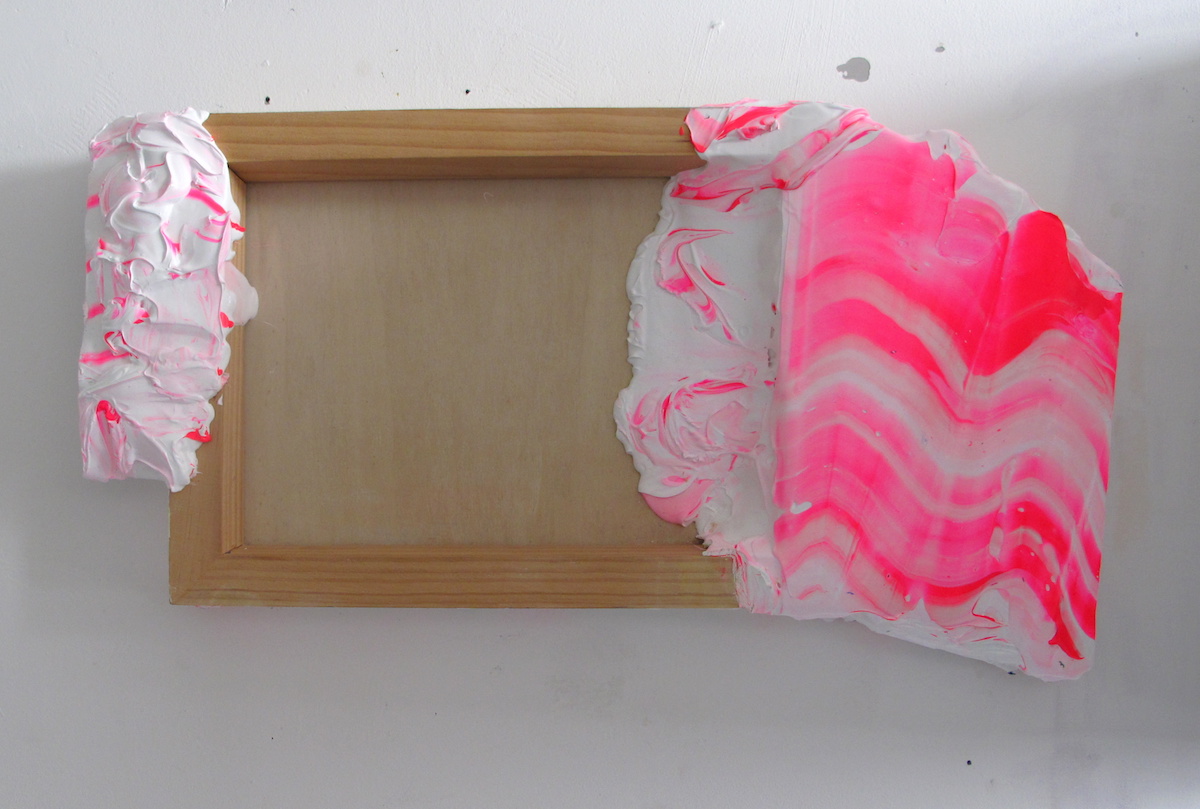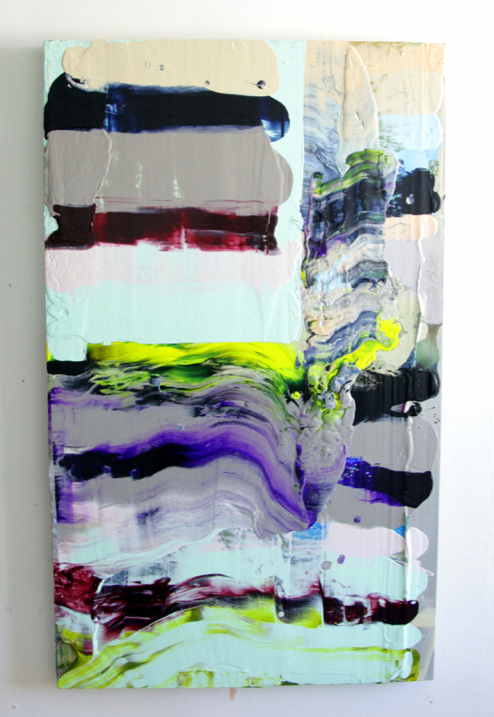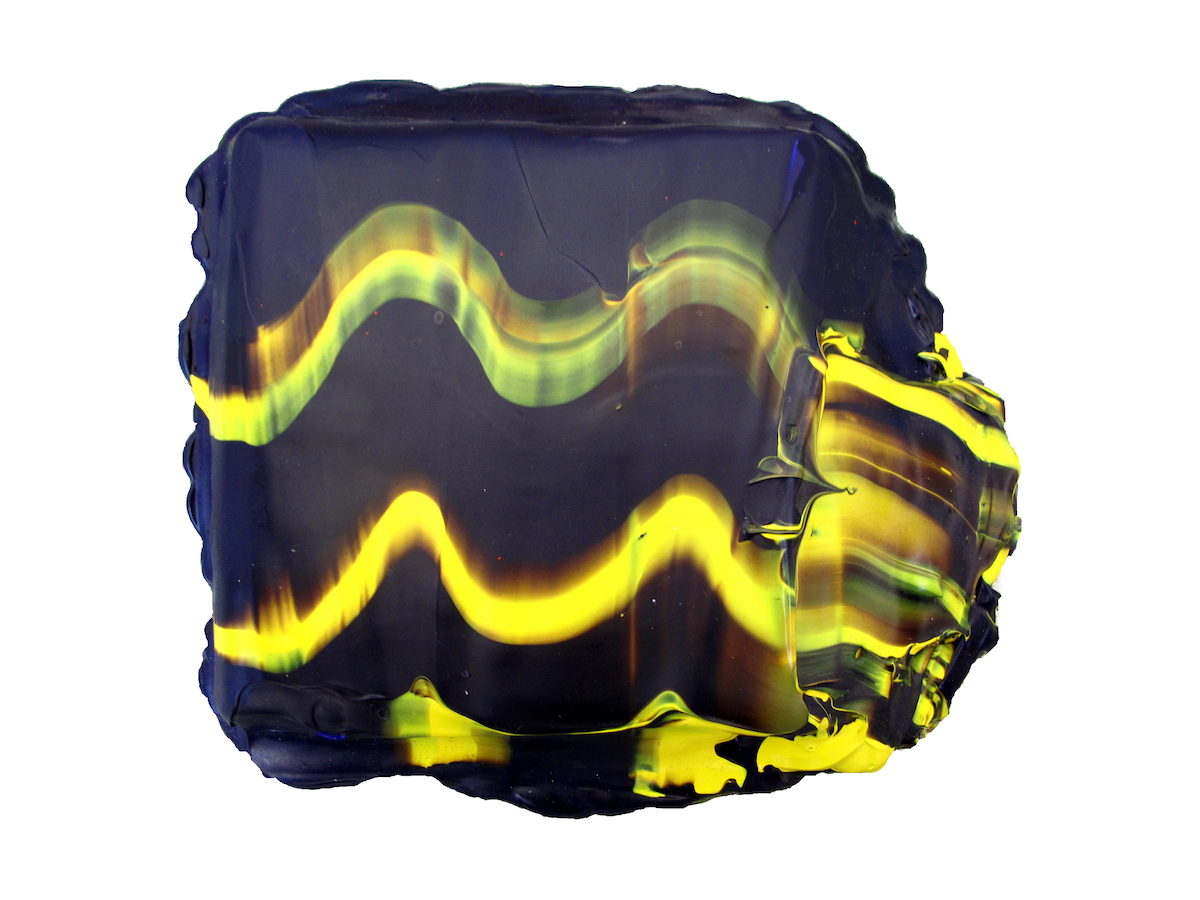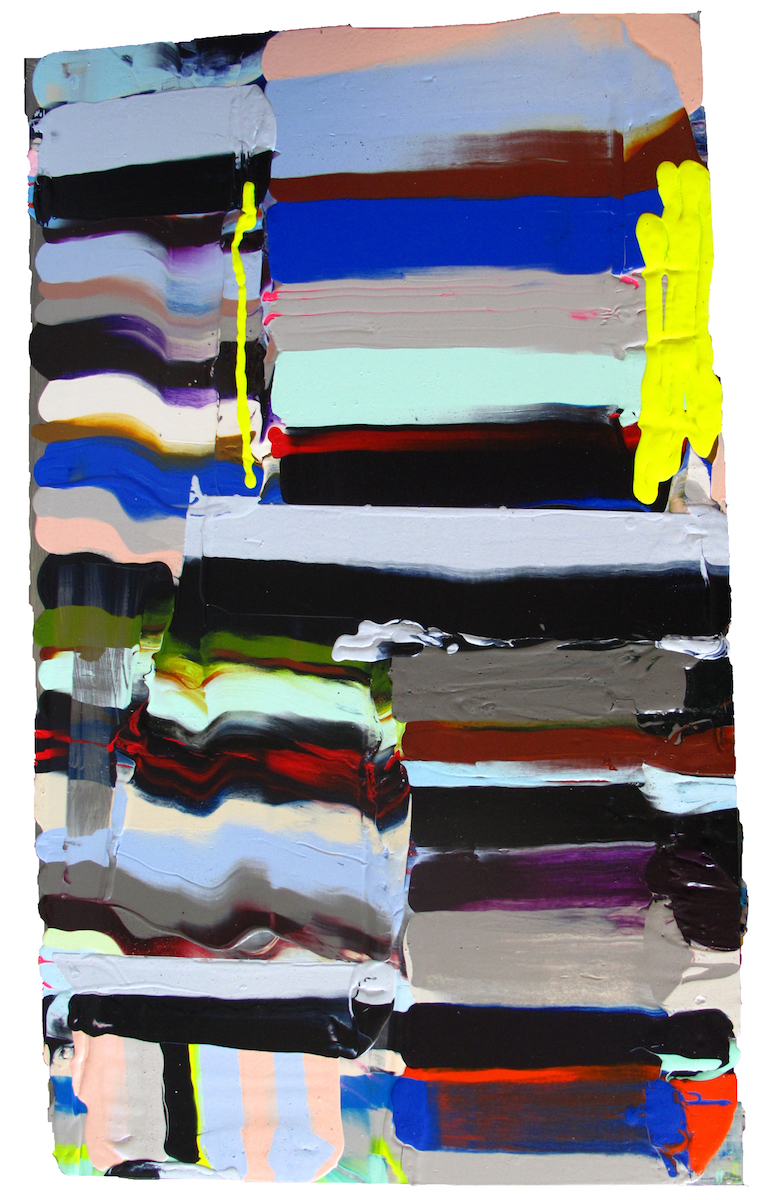Natalia Black, Musica Universalis at Green on Red
Are we bound together or merely loosely tied by vapour and wit?
Musica Universalis by Natalia Black, showing for the first time in Green on Red Gallery, involves itself with that question. Representation and physicality effortlessly interrelate. Ethics of sustainability and political movements echo in all things, and here, in art. This planet is overloaded with psychologically disparate individuals, each in turn overloaded by the real and the internet-real connect in this suggested visual concert. That which ties us, divides us and the space, or lack thereof, between us is explored. The amorphous dark matter between our psychical and physical worlds has never been more relevant and this is ephemerally explored through this experience.
The impetus for this work focuses on the medium itself for this artist. She uses sheets of thick paint as her plaything to form sculptural layer upon textural layer: luxuriant ones are covered by succeeding partial layers, cruelly tempting the viewer to guess what lies beneath. The process and each piece’s history are thus obscured, the privacy of the moments leading to the public exhibition echoing that of the viewer. The polymathic consciousness of this show and its interrelating interpreters untangle the invisible sheets swaddling us all.
A single moment transfixed in time, entitled Musica Universalis, emerges from a column in sprays of semi-opaque coloured glass tubes. There is an arrestment of progression that demands an address. The clustered moment to the upper right of the arrangement, frenzied in its assemblage, relaxes to a grounding spatial harmony beneath. Breathing slows as you move down the work in its natural spiral. It guides gently to the next piece, My Theory of Everything (2019). The void of the recess in the reverse of the canvas suggests an insight into the subconscious. The undressing front is laterally disrobed in swathes of paint in an unravelling of psychic bedsheets, flirting with the voyeur.
In this voluminous, brutalist gallery, the pictorial incidents tie together its layout and respond to its spaces and structures. The rhythmic ebb and flow wave motif of Black’s work enters even the most rigid sculptural piece. The tempo of their placements creates a rhythm that invites a deeper connection. The march along the works integrates with the window panes and makes me want to keep in step until I reach one of my favourite pieces, String Quartet in D (yellow).
It is here I rest for a moment longer. This meeting of waves and rectilinear layers, both consuming each other and overlapping in differing occasions, requests a halt. The lines of movement seem to signal a temporal full stop. It is here I gaze and allow myself to fall into a trance-like meditation, optically navigating the yellow vertical divisions. It is in that moment when I halt my body, still lilting pendulously from gathered momentum, that I allow my eyes to fall upon the details and discover Natalia’s surface microcosms. Small swirls of seemingly almost accidental fractals that usher forth concepts of the accidental nature of our selves and our humming planet in the greater cosmic scheme.
I return to the initial space, able now to appreciate the delights of the softened lines in Northern Lights which echo a soothing heartbeat and I can again look more closely at Musica Universalis, the piece and the exhibition, and realise that the sharp glass tubes which penetrated my psychological boundary so too penetrate the column from which they dependently cantilever. I then think I hear the symphony orchestra tuning their instruments.




